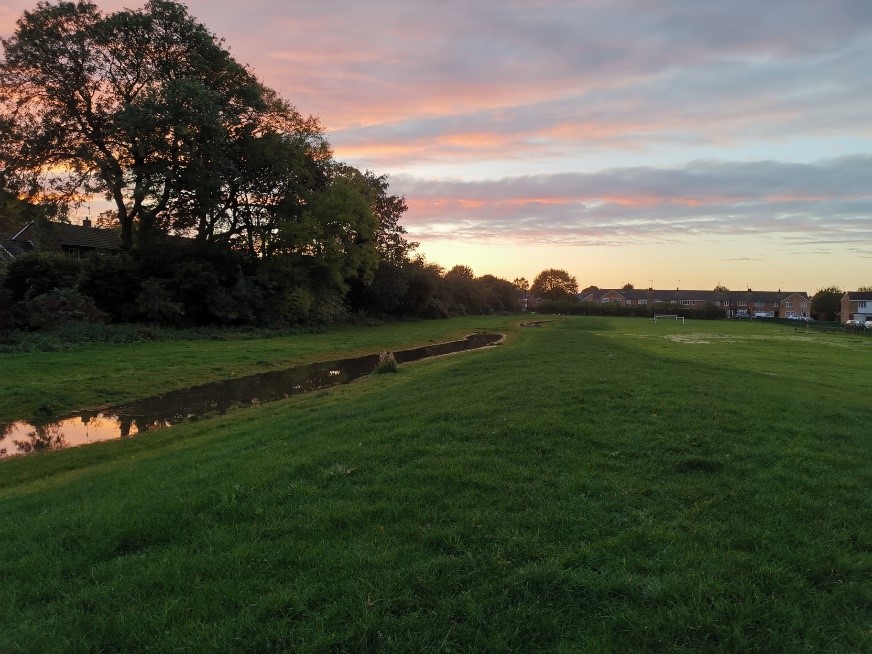
Flood Innovation Centre Co-Project Manager, Anton James introduces the implications to developers of impending legislative changes.
Here at the Flood Innovation Centre, we were pleased to note the recent Government announcement that new building developments will be required to include sustainable drainage systems, often referred to as SuDS, from 2024.
This was one of the key recommendations of a Department for Environment, Food and Rural Affairs (DEFRA) review for the implementation of Schedule 3 to The Flood and Water Management Act 2010. The review recognised the important role that nature-based drainage solutions play in draining land, protecting against surface water and sewer flooding, and reducing storm overflow discharges, as well as harvesting water at the same time as enhancing local biodiversity and amenity.
The review concluded that we ‘must increase the use of these alternative solutions to improve drainage, particularly in urban areas where systems must cope with both runoff and wastewater’. DEFRA will shortly be consulting on how to implement the new policy, with a view to sustainable drainage systems becoming mandatory in new developments from next year.
But what are sustainable drainage systems and what will this new piece of legislation mean in practice for developers?
Sustainable drainage systems mimic natural drainage solutions to provide an alternative to the direct channelling of surface water through networks of pipes and sewers to nearby watercourses.
In natural environments, rain falls on permeable surfaces and soaks into the ground in a process call infiltration. However, in urban areas, where there are many hard, sealed surfaces, natural filtration is limited. This is why we have drainage networks in our towns and cities to direct surface water to nearby watercourses. However, in some areas, this can contribute towards flooding further downstream, as well as impacting upon the quality of river water.
Sustainable drainage systems aim to address these issues by storing or re-using surface water close to where it falls, reducing the volume of water flowing into our rivers and, at the same time, improving water quality. This process be described in three simple steps; slow, store and filter.
Elements of sustainable drainage systems include detention basins, which are depressions covered with vegetation that hold rainfall and slowly drain it; retention ponds, which are larger depressions that can even store water during dry conditions; wetlands, which are green spaces featuring shallow ponds and marshland; and permeable paving.

It’s also possible to apply sustainable drainage techniques in small gardens and outdoor spaces. In fact, we recently staged a workshop for representatives of a number of charitable organisations and community groups , who were taught how to create rain gardens and smaller scale rain planters on their premises, both of which filter, slow and store rainwater, as well as looking attractive and providing valuable habitats for birds, insects and other wildlife.
Developers and construction firms certainly have nothing to fear from the new legislation. In fact, they’ll will undoubtedly find that it saves them money as a result of what’s known as Biodiversity Net Gain (BNG), which is something that all local authorities are required to address.
Here at the Flood Innovation Centre, our team of experts are funded to work with eligible businesses in Hull, East Yorkshire and South Yorkshire, as well as several other areas of the country. We can help developers and construction firms to understand the principles of sustainable drainage systems, as well as how and where to apply them. We know from speaking to our contacts within the construction sector that a growing number of developers are keen to address climate change and help protect our environment. Sustainable drainage systems are a very important part of the solution and we see the introduction of this new legislation as a positive step forward that will help to make our communities more resilient in the face of climate change, as well as making our rivers cleaner and boosting biodiversity. We’d encourage any developers with questions or concerns to get in touch so that we can help them to prepare.
This blog appeared first as a Yorkshire Post’s ‘Business Voice‘ article on 15 February 2023.
Lead image by Paul Lakin via wikimedia commons